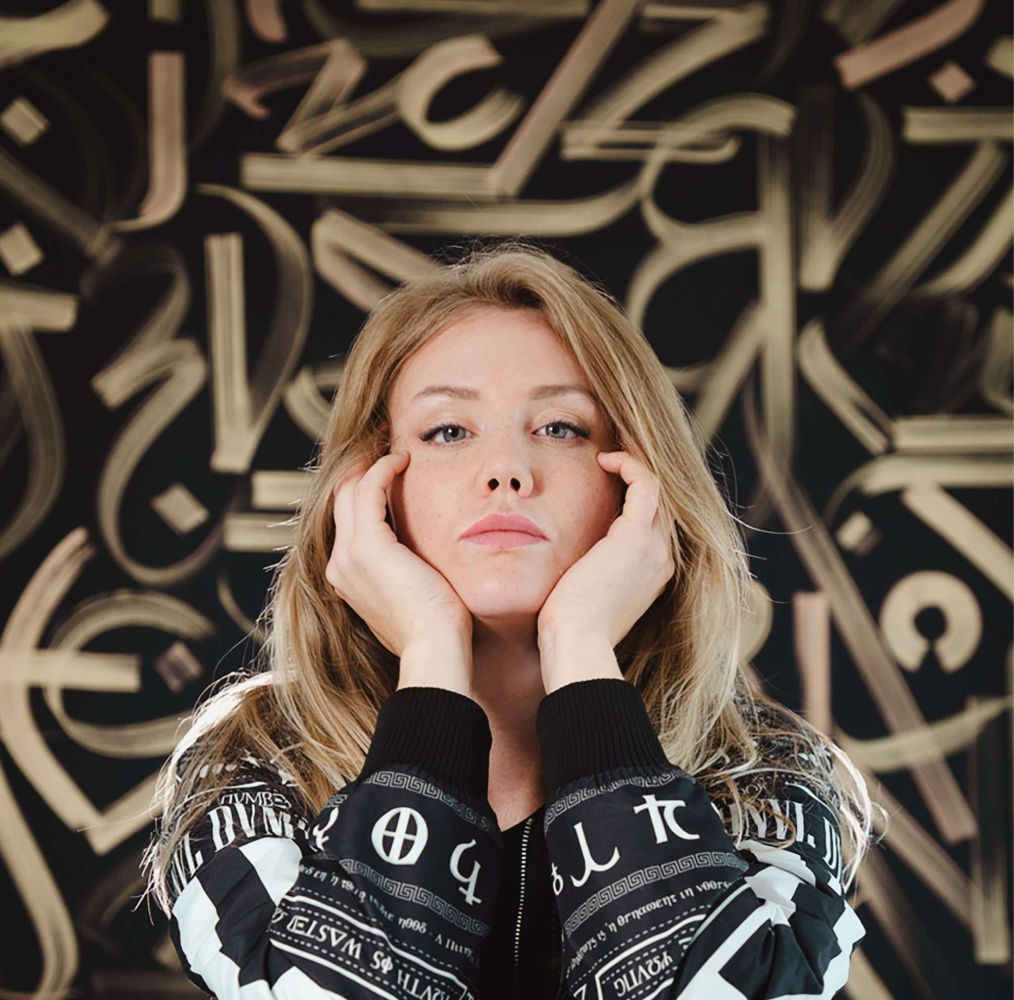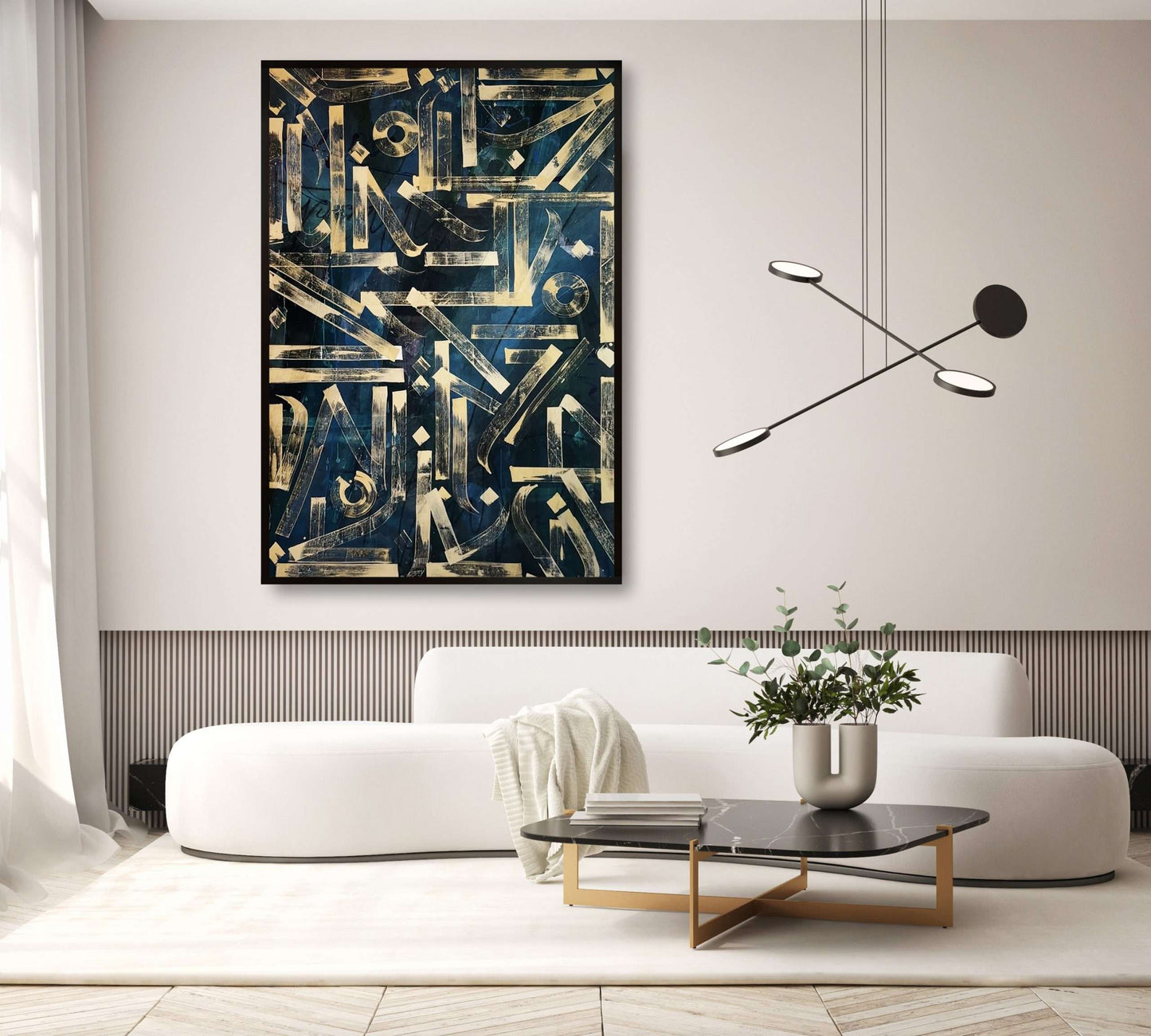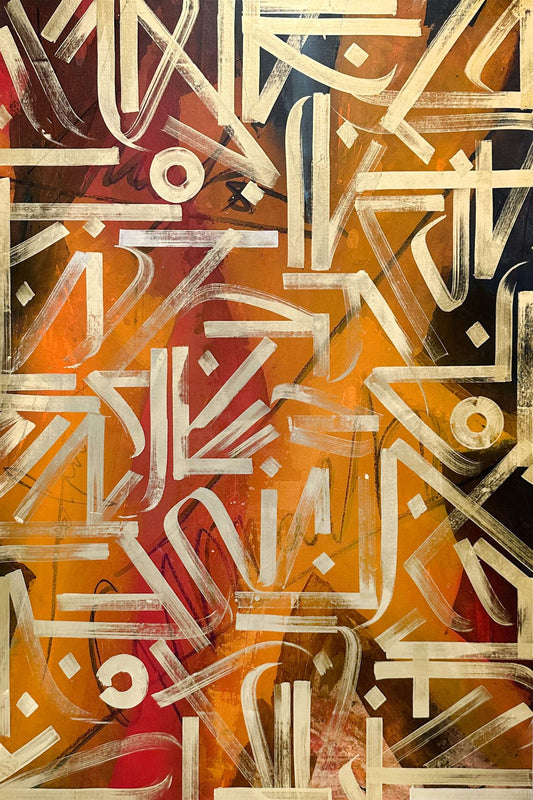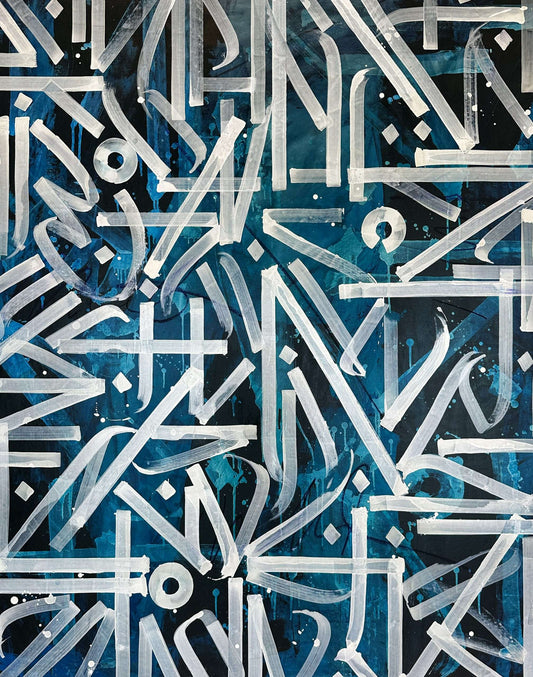
Kate Paul
Opposites. It is in them that Kate finds the substance of her art. It combines large canvas formats with small size of marks, the solidity of a geometric composition with the lightness of meandering ornaments, a dark background with a light pattern or a light with a dark, the stability of a painting with its own mobility in the act of creation, a yesterday from which it draws with a tomorrow for which it creates. He seeks contrast, builds a dramaturgy of differences. It is only from the union of oppositions that meaning emerges, he says. Kate Puchała comes from a part of Europe where transformation, the replacement of the old with the new, the accumulation of different ways of life and styles, the building of new walls on the old ones and all other clashes between spirit and matter they are an adequate model of life. Lower Silesia is a palimpsest of cultures – German, Czech, Polish, Jewish – created over the centuries through wars, looting and revolutions, as a result of migration and resettlement, but also through the will to survive of subsequent inhabitants. And she, with her artistic gesture, continues and co-creates this fascinating overlap of qualities, possible only in this location in the world. The past, he believes, makes no one here forget about it. “You can't live without it in Lower Silesia. Dark castles and palaces, abandoned villages and houses, worn walls and columns, faded paintings. Their mysterious landscape is a canvas or my signs”. And he tirelessly writes them among the pictorial verses of his works. Their large spaces, mostly dark, are similar to the walls of the ruins that abound here and that Kate penetrates with passion, sometimes lighter like pages of letters or books that she finds in a suitcase of family memories. They could be plans of lost cities or yellowed letters recovered from archives. And that's partly who I am. For her, however, they are first and foremost fragments of history discovered by her, but also suggested to the viewer. They too can follow smears, paths and meanderings of colors, wandering symbols, hieroglyphics, ciphers, and find their own story in them. As the artist herself says: “What is calligraphy for me? A labyrinth. I follow a path of signs so as not to confuse the road. I follow a path of signs so as not to get lost. A light colored line on a dark background is my Ariadne's thread. Where do I want to go? To the mystery. My letters and figures are not always completely understandable, even to myself. Where do I collect them from? From the traces of the past. I trace the writing of old documents and ornaments among the rubble, the shapes of destroyed furniture and tools. I know that their shapes are a code that connects the past to the present. I do not use calligraphy for the beauty of the form, as other painters do, nor for experimentation. Japanese, Latin, or Arabic scripts, or even digital notations on a computer, carry meaning. They say something about the world that created them. Do they say anything about people? Yes! With the movement of my pictorial hand, I discover their loves and hates, desires and fears – their destinies. With my pictorial inscriptions, I tell stories about them." It is no coincidence that his first paintings were literally created from books. It was they – found in antique shops, with traces of their previous users – that became, in the form of large installations, almost canvases on which eyes appeared, an important motif in Kate's art and in her thinking about the world. In those compositions, the books lived as objects, their rippled pages moved by the wind or the breath of the people looking at them; they also existed as stories, which appeared fragmentary to the spectators, reconfigurable according to the spectators' own desires; and finally, they existed by awakening the memory of readers of the past. “I insert images between the lines of the text,” explains the painter. I try to provoke the viewer to look at the story again." And the eyes? They are essential for this. We must know how to look and understand that objects and paintings are also looking at us, and that the process of looking itself is dynamic, changing and not passive, especially the pictorial gaze. The signs that Kate now evokes in her work come to her, she says, from books that have survived despite the difficult history of these lands, from the lines of cornices and reliefs in neglected buildings, from the faded inscriptions on gravestones. Oval and gentle or angular and violent. They flow rhythmically in his paintings or stop abruptly, transforming performatively under his hand. They can be runes, Chinese or Hebrew characters. But also a variety of Latin characters, depending on the personalities of the people writing and the calligraphy that changes over the centuries. The meaning of seemingly similar symbols is sometimes completely different. “Against the time that destroys them, they are expressive and resolute when they are on my canvases. I give them bright shades. I want to get them out of the past. They receive a new life from me.” And this new life, this story, identified by the author and subsequently by the viewer in her paintings, recovers from non-existence






